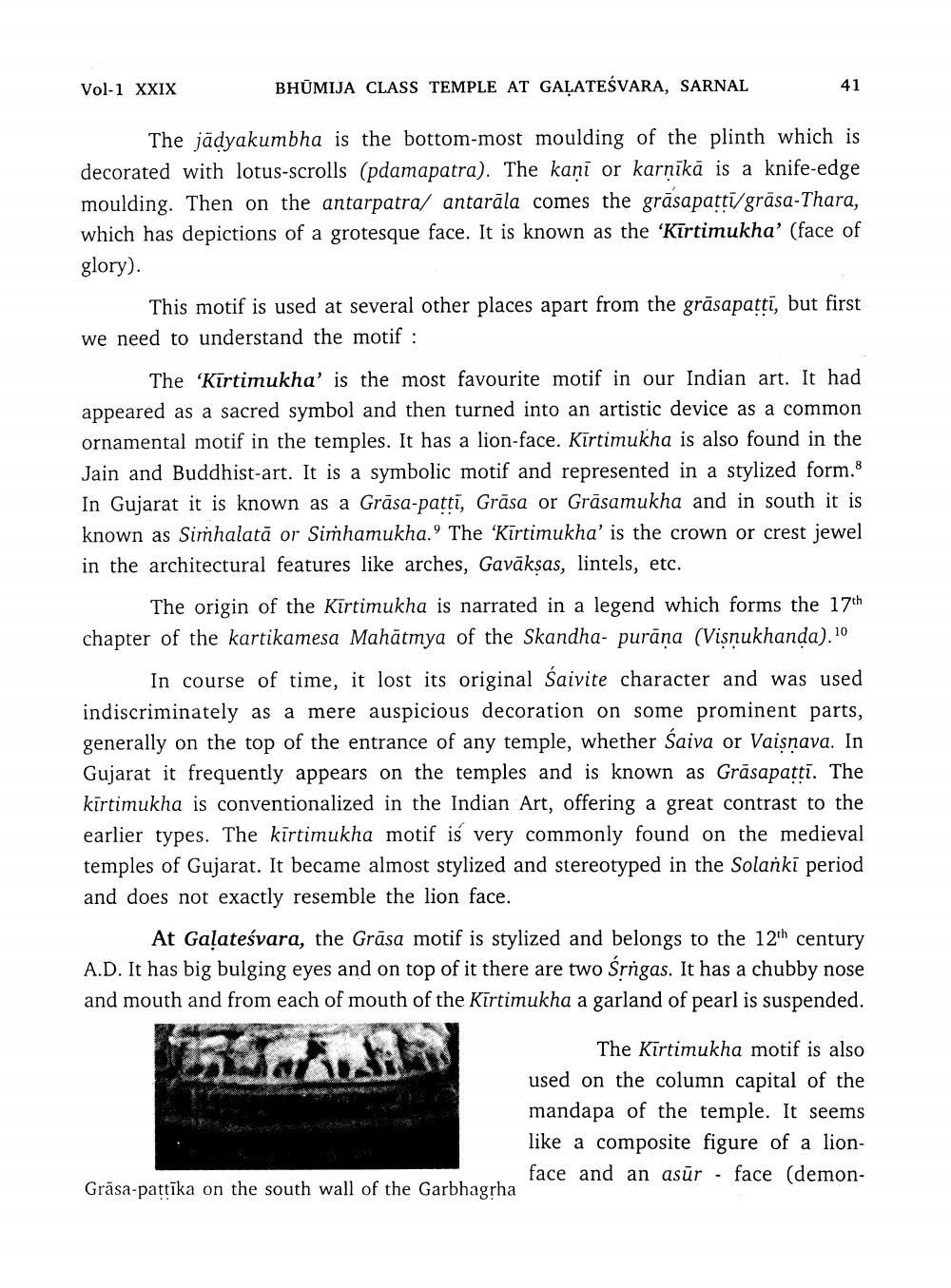________________
Vol-1 XXIX
BHUMIJA CLASS TEMPLE AT GALATESVARA, SARNAL
The jadyakumbha is the bottom-most moulding of the plinth which is decorated with lotus-scrolls (pdamapatra). The kani or karnīkā is a knife-edge moulding. Then on the antarpatra/ antarala comes the grāsapattī/grāsa-Thara, which has depictions of a grotesque face. It is known as the 'Kirtimukha' (face of glory).
This motif is used at several other places apart from the grāsapatti, but first we need to understand the motif :
The 'Kirtimukha' is the most favourite motif in our Indian art. It had appeared as a sacred symbol and then turned into an artistic device as a common ornamental motif in the temples. It has a lion-face. Kirtimukha is also found in the Jain and Buddhist-art. It is a symbolic motif and represented in a stylized form.8 In Gujarat it is known as a Grāsa-patti, Grāsa or Grāsamukha and in south it is known as Simhalatā or Simhamukha. The 'Kirtimukha' is the crown or crest jewel in the architectural features like arches, Gavāksas, lintels, etc.
The origin of the Kirtimukha is narrated in a legend which forms the 17th chapter of the kartikamesa Mahātmya of the Skandha- purāņa (Visņukhanda). 10
In course of time, it lost its original śaivite character and was used indiscriminately as a mere auspicious decoration on some prominent parts, generally on the top of the entrance of any temple, whether saiva or Vaisnava. In Gujarat it frequently appears on the temples and is known as Grāsapattī. The kīrtimukha is conventionalized in the Indian Art, offering a great contrast to the earlier types. The kirtimukha motif is very commonly found on the medieval temples of Gujarat. It became almost stylized and stereotyped in the Solanki period and does not exactly resemble the lion face.
At Gaļateśvara, the Grāsa motif is stylized and belongs to the 12th century A.D. It has big bulging eyes and on top of it there are two śrrgas. It has a chubby nose and mouth and from each of mouth of the Kirtimukha a garland of pearl is suspended.
The Kirtimukha motif is also used on the column capital of the mandapa of the temple. It seems like a composite figure of a lion
face and an asur - face (demonGrāsa-pattīka on the south wall of the Garbhagrha




